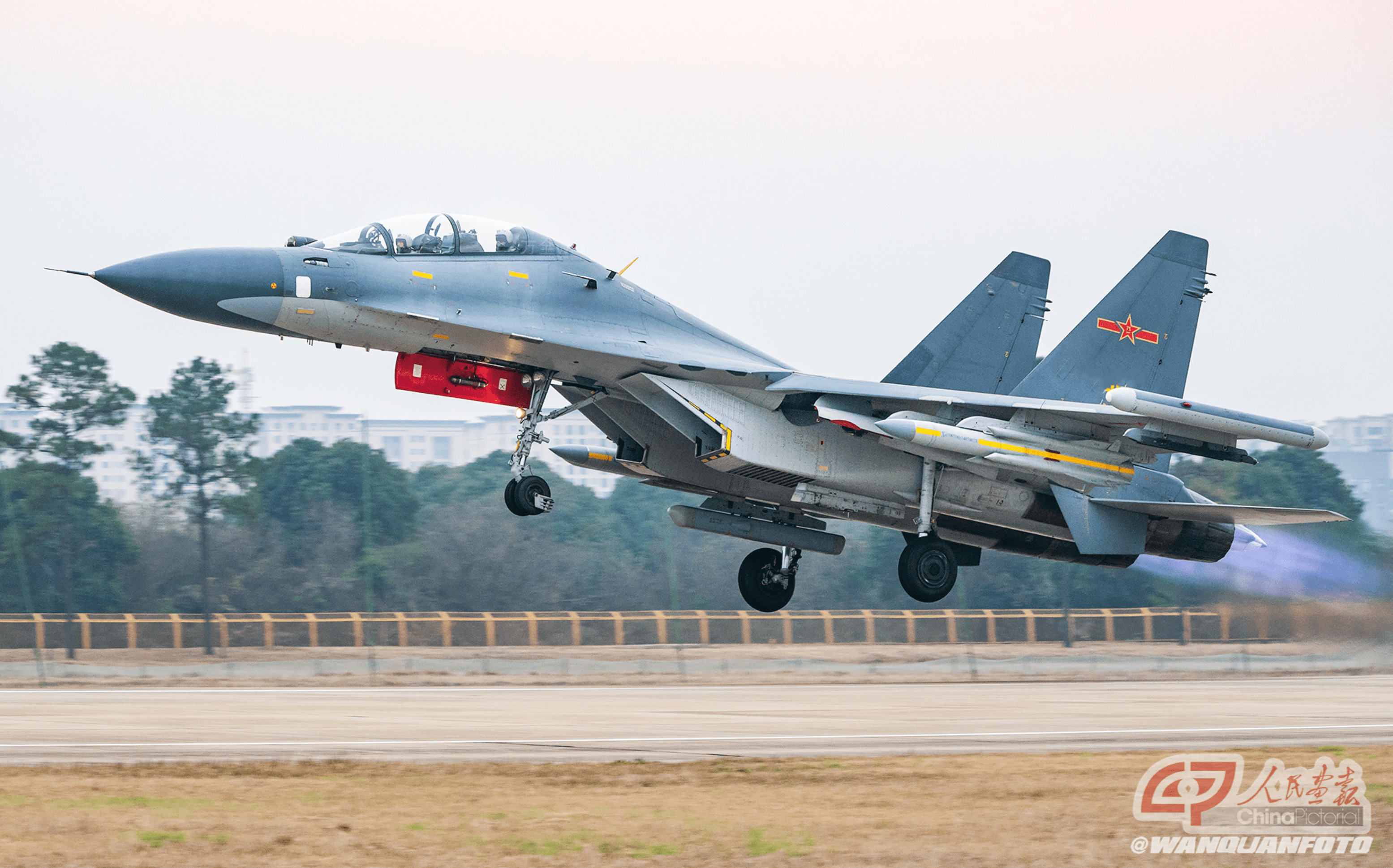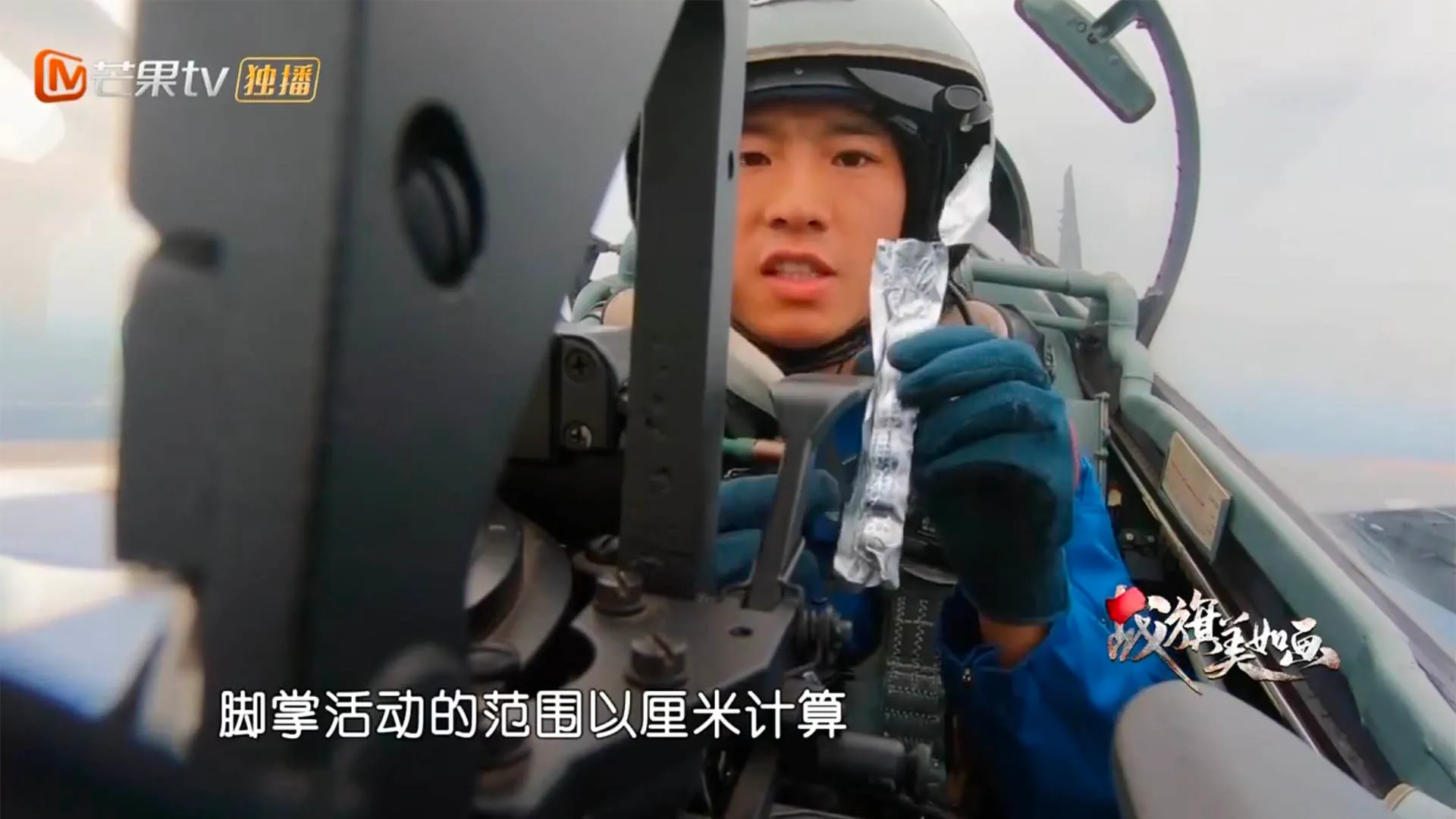A video has emerged online showing a long-range fighter patrol over the South China Sea being conducted by Chinese Su-30MKK Flankers. The video shows edited excerpts of a full mission, starting with aircrews running to their awaiting jets at Suixi-Nanning Air Base in Southern China, to aerial refueling,to a pass over the Subi Reef in the Spratly Islands, followed by the return to base.
The video offers a powerful illustration of the regional capabilities of the People’s Liberation Army Air Force (PLAAF) amid a torrent of U.S. and allied maneuvers in the region. The formation of at least six Russian-made Su-30MKK Flankers appears to be assigned to the 6th Air Brigade, which is based at Suixi, in Guangdong. The airbase is located close to the Chinese coast and the northern end of the South China Sea. At least some of the fighter-bombers are loaded with Russian R-27R and R-77 air-to-air missiles.
Subi Reef is one of a number of atolls in the hotly disputed Spratly Islands that China began artificially expanding in 2014, and has since transformed into outposts capable of sustaining various ground, air, and naval forces. It doesn’t appear that the fighters landed here, according to the video. What was described as a 10-hour mission was supported by what appears to be Il-78 Midas tanker aircraft, although these assets have been obscured in the video.
The full version of the video can be seen here, but unfortunately, it doesn’t feature sound.

The PLAAF ordered 76 Su-30MKKs in two batches from 1999. This version of the Russian fighter lacks the canards and thrust-vectoring engines that are featured on more advanced versions of the Su-30. The Chinese versions include an N001VE fire-control radar to provide air-to-air and air-to-ground sensor capabilities. China’s Su-30MKK can carry TV- and laser-guided air-to-surface missiles in addition to its Russian air-to-air weapons.
In recent years, imagery has also depicted the Su-30MKKs carrying the indigenous KG700 electronic countermeasures pod and Chinese weapons, such as the LS-500J laser-guided bomb, and the YJ-91 anti-radiation missile. This is linked to an upgrade that introduced a revised cockpit that includes domestic multifunction displays (MFDs) and updated avionics.

It’s commonplace for the Su-30MKKs to operate as long-range escorts for bomber missions over the South China Sea. In-flight refueling can extend their range to over 3,000 miles, which makes these Flankers an important asset for the PLAAF in this turbulent region. The opening sequence of crews dashing to the Flankers gives the impression of a scramble, which would underscore the importance the PLAAF places on the ability to get these fighters over the area at short notice to potentially intercept any unwanted visitors.
The Su-30MKKs are regularly called upon to intercept U.S. patrol aircraft in the region, you can read more about one specific incident with a U.S. Air Force WC-135 here.
Even though the large runway facilities at three of China’s remote island outposts deep in the South China Sea have been operational for a number of years now, China has not disclosed fighter deployments to them. They have plenty of facilities to support and even to conceal them, but as of now, the airfields only openly host maritime patrol, airborne early warning, and other non-fighter assets on a routine basis. Woody Island, at the north end of the South China Sea, does regularly support fighter operations.

Interestingly, none of the aircrews in the video are wearing life jackets, which seems unusual for a long over-water flight. It could be that they are equipped with some sort of floatation device that isn’t obvious in the clips in the video. They do, however, appear to be carrying a range of pre-packed drinks and snacks.
This film offers similar interesting insights into Chinese fighter missions as was afforded in this recent Chinese dogfight video, as was reported by The
War Zone. This time around its a carefully coordinated mission by Chinese fighters and tanker aircraft that sends a clear statement of capability in one of the world’s hottest potential flashpoints.
Contact the author: Jamie@thedrive.com
